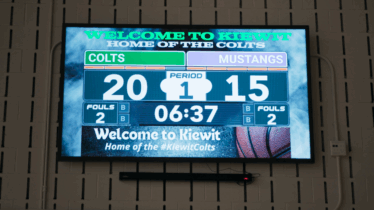Chromebooks have proven to be a popular technology choice for schools seeking to move toward a more digital classroom. In fact, Chromebooks outsold other types of computers for schools in the first quarter of 2016.
But what about school districts that have a fleet of aging laptop PCs that they can’t afford to replace with a completely new set of Chromebooks? That was the case in New Jersey’s South Amboy School District. Michael Elson, technology coordinator, is the sole support for a district of 1,200 students and a mix of machines of different makes and ages, including Chromebooks, desktops and laptops. Because his district is small, he is “always looking for ways to stretch the budget” and get the most out of his available technology resources. Elson says the easy management and automation options offered by Chrome make this possible — but he needed to make sure his varied systems were all able to be managed in this way.
Converting a Mixed Fleet Into Chromebooks
Over the years, Elson has tried different methods to get more life out of the aging computers in his district’s labs and classrooms, such as converting to Linux. None of the options he tried were a great fit, until he found CloudReady by Neverware, which converts many models of desktops, laptops and netbooks to Chrome OS. And when it’s converted, “a Chromebook is a Chromebook is a Chromebook,” says Elson. A CloudReady machine runs everything a Chromebook runs, and is managed the same way using the Google Admin console.
The Cost Effectiveness of Chromebooks
Budget stretched thinly? Find the most affordable way to bring the Chrome OS to your classroom. Download Now
Using Automation to Ease Chromebook Management
Once these older computers were converted to Chrome, Elson was able to help his teachers automate many of their processes — improving teacher tech literacy and ensuring that classrooms become more digital.
He uses the Google Admin console to manage machines, push updates and ensure that Chromebooks have the appropriate security settings for the assigned user. He has also created an automated booking system so teachers can reserve computers without his direct intervention, a process he previously had to manage manually.
Teachers have also found their own tools to extend the Chrome experience and enhance student learning. Google Apps for Education provides much of what teachers need, Elson says. For example, they can use Google Classroom to schedule assignments, tests and other important events throughout the academic year, and students can collaborate on documents and revise based on feedback. According to Elson, a lot of students don’t even print assignments anymore; they just “turn in” their Google documents by sharing them with the teacher.
For further functionality, schools use If This, Then That (IFTTT) to copy web announcements from their Google sites to their social media accounts. And teachers use Flubaroo to offer in-class quizzes and have them graded automatically, sending each student their score and writing the scores into the school’s learning management system. This functionality helps reinforce the digital classroom throughout the process of teaching and assessment.
Experiencing the Power of Chromebooks in the Digital Classroom
Once a computer is converted to a Chromebook, it offers the same in-classroom benefits. It boots quickly, says Elson, so teachers and students “can get right into the learning activities.” It stores student and teacher files in the cloud, enabling them to access their own files and saved information from whichever machine they’re using at the time. And it integrates seamlessly into the management tools for Chromebooks, allowing IT staff to manage the machines just like any other Chromebook.
And newer versions of CloudReady offer one tool that will convert even the biggest holdouts — dual-boot options, allowing the user to run the original operating system if needed and Chrome for everything else.
So, if you’ve got a fleet of computers that are physically sound but get bogged down running the latest software and operating system, consider adding them to your existing cache of Chromebooks. They’ll run fast enough to keep students happy — and offer all the benefits of the Chrome ecosystem.
Chromebooks are bringing schools across the country a step closer to 1:1 student computing. Learn how Samsung and Neverware are working together to deliver the Chromebook and CloudReady package.








